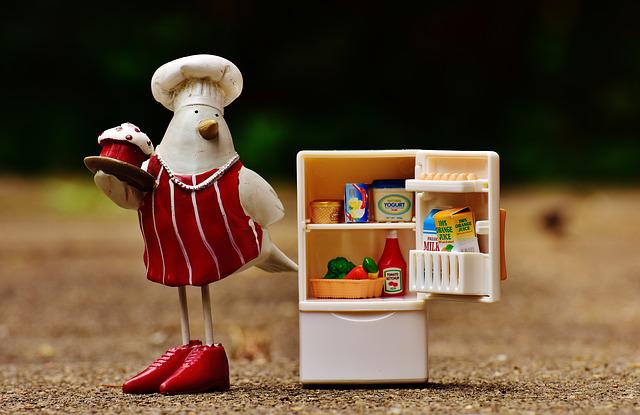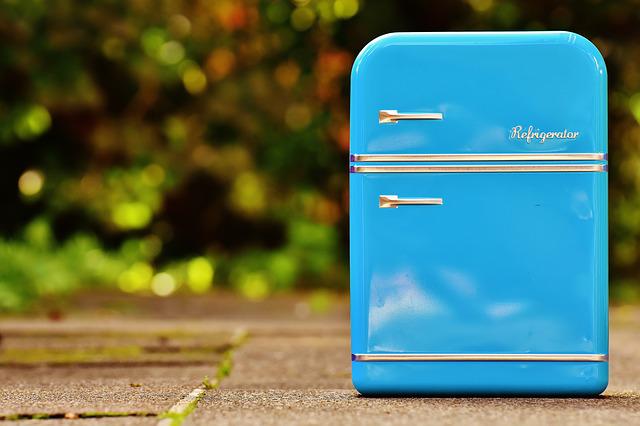Which Gas Is Used in Refrigerator?
Have you ever heard electricians talking about your fridge needing Gas replacement? Do you know which gas they are talking about?
Yes, Refrigerators use gas for their cooling effect which helps your food to stay fresh and preserved for a long time. Many different gasses can be used in the gas refrigerators like HCFs, etc. Earlier, Gas refrigerators were installed with Chlorofluorocarbons or simply CFCs which are harmful to the environment. Taking into consideration their harmful effects, they are replaced by many other gases that are eco-friendly like HCFCs or HFCs.
So, Let’s delve more into the topic. which gas is used in refrigerator
Also Read: Best Refrigerator Brand In India
What are Gas refrigerators and refrigerant gas?
Gas refrigerators are used in our households, offices, and many places. Refrigerant gases are those gases having extremely low evaporation points and getting easily condensed under pressure to provide the chilling effect. The repetitive evaporation and condensation of these gases result in the pulling out of heat from the refrigerator and making the inside air chilled.
In earlier times, Chlorofluorocarbons were used as refrigerant gas but now they have been phased out due to their bad effects on the Ozone layer.
History of refrigerant gas used in Gas refrigerator
Earlier in 1920, Refrigerators were filled with toxic gases like fluorine, chlorine, and carbons. In the 1970s it was discovered that these gases are the major cause of Global Warming and Ozone layer depletion. These gases, when get exposed to the Atmosphere, come in contact with Ultraviolet rays. This result in some chemical reactions and causes the greenhouse effect.
From there, scientists started working toward finding environment-friendly gases that can be used in refrigerators potentially. Gases like HCFC (Hydrogen, Chlorine, Fluorine, and Carbon) were discovered. Scientists found that these gases when exposed to the environment have a shorter lifespan. Thus, they leave minimal bad impacts on the environment.
Also, The Gases like HFCs which are Chlorine-free have no harmful effects on the environment. That is why HCFC and HFC are commonly used nowadays.
Also Read: 10 Best Guaranteed Income Plans 2023 in India

Why there are different refrigerants for gas refrigerators?
There are different refrigerants used in different countries in refrigerators because of the Kigali agreement or the Montreal Protocol. This agreement had different provisions for different countries which is why countries use different refrigerants.
This agreement grouped the member countries into 3 groups and gave them different deadlines to phase out the harmful gasses.
Also Read: How To Reset The UPI Pin?
A quick overview of gases used in gas refrigerators
| S.no | Refrigerant Gas | Use |
| 1 | R22 Chlorofluorocarbons | It is a harmful gas to the ozone layer and was used in old refrigerators. Now it has been phased out and no modern refrigerator is installed with this gas. |
| 2 | R134A Tetrafluoroethane | This gas is used in the present time refrigerator but it is harmful to the ozone layer. Soon this gas will be completely phased out of use. |
| 3 | R438A Freon | This is the potential replacement for R22 gas. It is used widely in modern gas refrigerants and can also be found in old repaired refrigerators. |
| 4. | 4600A Iso butane | This is a flammable gas and is used only in some of the small modern refrigerators. |
Different Refrigerant Gases Used in Modern-day Gas Refrigerators
In modern times where there is a need for many gadgets to make our lives easy, it’s important to maintain a balance between getting easier life and taking care of the environment. During the times when Chlorofluorocarbons were used, it was seen that environment is getting damaged. So, to maintain the balance between life and the environment, new gases were selected wisely to work as a replacement.
Also Read: Best Washing Machine Brands in India
Let’s have a look which is these Gases:
- Tetrafluoroethane
The use of this gas started in the early 1990s. HFC-134a (1,1,1,2-tetrafluoroethane) is one of the most commonly used refrigerant gases used in gas refrigerators and leaves no bad effect on the ozone layer. This gas gets condensed quickly and can cool down the fridge faster without any further damage to the ozone layer. This gas is commonly used in all such equipment that needs to create cool surroundings.
- Chlorofluorocarbons
The use of this gas was started in the 1970s and many companies are still using this as refrigerant gas. R134A () is used as a pressurized liquid that expands as gas to absorb heat and leave chilled air in the fridge.
The hot gas is passed with a compressor for removing heat and again get pressurized to turn into liquid.
- Polystyrene
Polystyrene is a popular insulator used as the internal padding in the refrigerator to keep the heat away. It is budget-friendly and creates a barrier between outside heat and the inside temperature of the gas refrigerator.
It enhances the internal temperature of the machine thus keeping it chilled. This gas is used as a refrigerant since the 19th century.
- Acrylonitrile
Acrylonitrile is one of the most effective insulators between the refrigerator’s interior and external environment. It is easy to clean and thus is mostly preferred in common use. The use of this gas started in the 19th century.
- Ammonia
Ammonia is one of the oldest refrigerant gases used in gas refrigerators and is still used in big plants and industries. Ammonia gas is naturally occurring and almost free of cost as it is naturally occurring. It is not used commercially because it’s inflammable and toxic.
- Isobutane
R600a is commonly used in Europe and is the most suitable gas for domestic refrigerators. Its GWP (Global Warming power) is almost negligible which is why it is mostly preferred in developing countries. The only drawback of this gas is that it is highly flammable.
R600a is also used in India but is not the common gas used in the country.
Also Read: Top investors in Indian stock market
Frequently Asked Questions on which gas is used in refrigerator
Q1. What type of refrigerant gas is used in Gas refrigerators?
Ans. These days, the main type of refrigerant gases used are HCFCs and HFCs. Hydrocarbons are environment-friendly and do not cause pollution that is why these are used instead of old harmful refrigerant gases.
Q2. Which Refrigerant gas is chlorine-free?
Ans. There are mainly two gases that are chlorine-free: Hydrofluorocarbons and. These gases have no bad effect on the ozone layer However, these gases can affect the environment causing the greenhouse effect and increasing global warming.
If we compare both the gases, Hydrocarbons are safer than hydrofluorocarbons for the environment as they have a lower impact on the environment and low Global warming Power.
Q3. Which Refrigerant gases have been phased out to date?
Ans. Class 1 and Class 2 refrigerants have been mostly phased out. The target is to phase out these gases completely from the use by 2030.
Q4. Is it possible to use Water as Refrigerant?
Ans. Yes, water can be used as a refrigerant, and in fact, it is the oldest method used for cooling in machines.
Q5. Is tetrafluoroethane used as refrigerant gas?
Ans. Yes, Tetrafluoroethane is used as the refrigerant gas – R134a
Q6. What is the average life of refrigerant gas in refrigerators?
Ans. The average life of refrigerant gas after installation is 15-20 years which is almost equal to the life of the refrigerator. However, the life of the refrigerant depends on the model of the fridge like refrigerants in compact refrigerators have a shorter lifespan. You must check for the signs of low refrigerant gas and get it refilled.
Also Read: Top Mobile Brands in India
Electric Bike Companies in India
How to check HDFC debit card EMI statement online
Hello there, my name is Phulutu, and I am the Head Content Developer at Nivesh Karlo. I have 13 years of experience working in fintech companies. I have worked as a freelance writer. I love writing about personal finance, investments, mutual funds, and stocks. All the articles I write are based on thorough research and analysis. However, it is highly recommended to note that neither Nivesh Karlo nor I recommend any investment without proper research, and to read all the documents carefully.






Leave a Reply